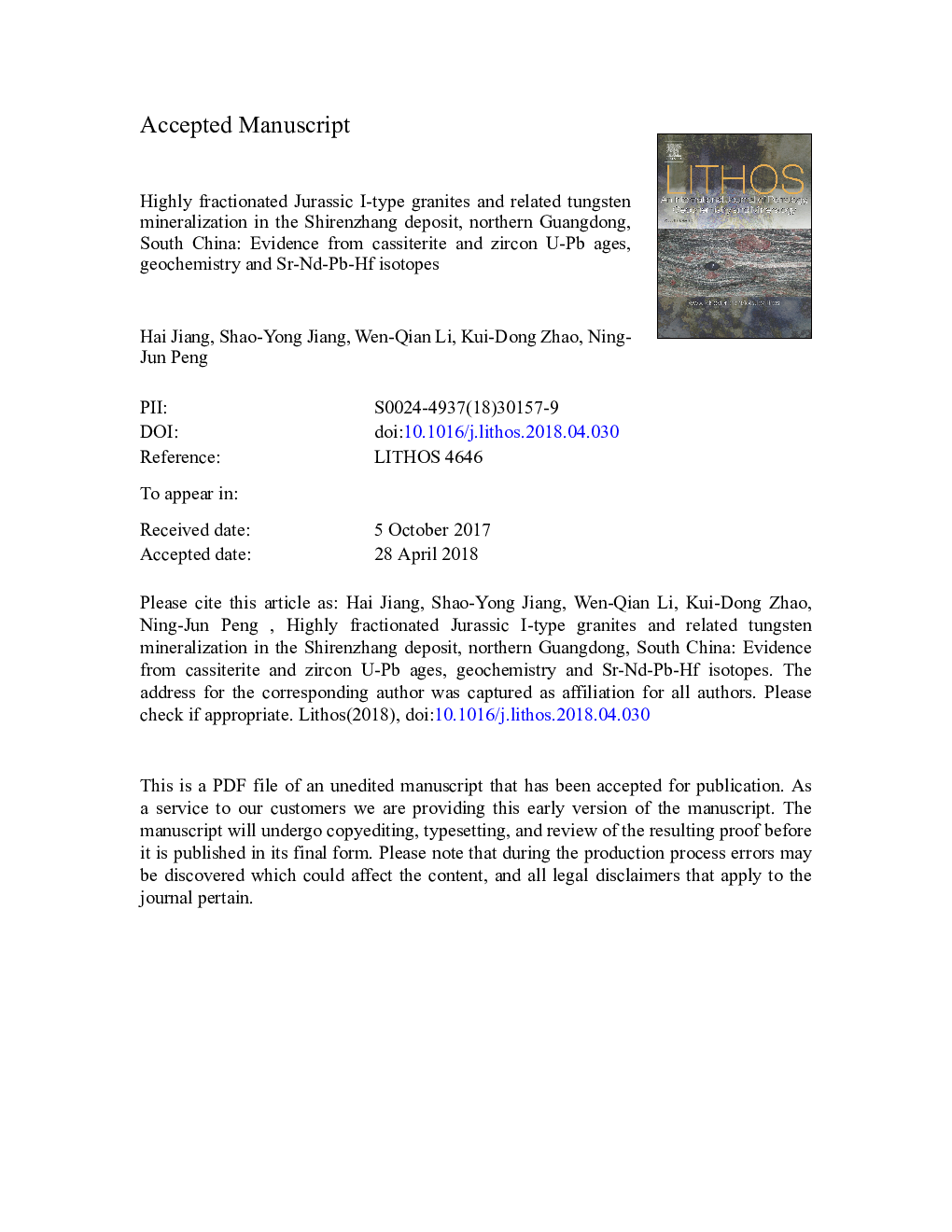| Article ID | Journal | Published Year | Pages | File Type |
|---|---|---|---|---|
| 8911589 | Lithos | 2018 | 64 Pages |
Abstract
The Shirenzhang tungsten deposit is a classic wolframite-quartz vein-type deposit located in northern Guangdong Province, eastern segment of the Nanling W-Sn polymetallic belt. The ore veins, controlled by the NW-striking fault system, are mainly hosted in the Ordovician metasedimentary rocks and can also be found with less amount in the cupola of the concealed granitic stock, displaying a typical five-floor vertical zonation proposed by the Chinese geologists. The concealed granitic stock mainly comprises two intrusive facies, the porphyritic biotite granite (G1) in the outer zone and the medium- to fine-grained monzogranite (G2) in the inner zone. In this paper, we report new cassiterite U-Pb ages and Pb isotopes of sulfides for the Shirenzhang tungsten deposit, combined with new zircon U-Pb ages and Hf isotopes, elemental geochemistry and Sr-Nd-Pb isotopes of the concealed granitic rocks, with aims to elucidate the origin of the ore-related granites and the link between the tungsten mineralization and granitic magmatism. LA-ICP-MS zircon U-Pb dating gives the weighted mean ages of 164â¯Â±â¯2â¯Ma for G1 and 162â¯Â±â¯4â¯Ma for G2, respectively. Cassiterite from the wolframite-bearing quartz vein and the drusy quartz vein yield the weighted mean ages of 164â¯Â±â¯2â¯Ma and 160â¯Â±â¯2â¯Ma, respectively. These ages suggest that both the granitic intrusion and related W-(Sn) mineralization in the Shirenzhang deposit were initiated during the late Jurassic (ca. 160â¯Ma). The Shirenzhang granitic rocks are weakly peraluminous highly fractionated I-type granites. Detailed elemental and isotopic data demonstrate that the granitic rocks were derived from partial melting of the Paleoproterozoic basement rocks at a relatively shallow depth of ~30â¯km triggered by underplating of basaltic magma, and underwent extensive fractional crystallization of hornblende, biotite, feldspar, and monazite and/or allanite. A continental arc setting induced by northwesterly subduction of the paleo-Pacific plate is suggested for the genesis of the Shirenzhang I-type granites. The comparable Pb isotopic compositions of feldspar and sulfides imply that the lead in the ore veins was of magmatic origin. Integrating the spatial-temporal relationship between the ore veins and the concealed granitic rocks with the Pb isotopes from the sulfides and granites, we suggest that the tungsten mineralization is genetically linked with the concealed granitic rocks in the Shirenzhang deposit. Fractional crystallization and melt-fluid interaction may play an important role on the formation of the granite-related tungsten mineralization.
Keywords
Related Topics
Physical Sciences and Engineering
Earth and Planetary Sciences
Geochemistry and Petrology
Authors
Hai Jiang, Shao-Yong Jiang, Wen-Qian Li, Kui-Dong Zhao, Ning-Jun Peng,
